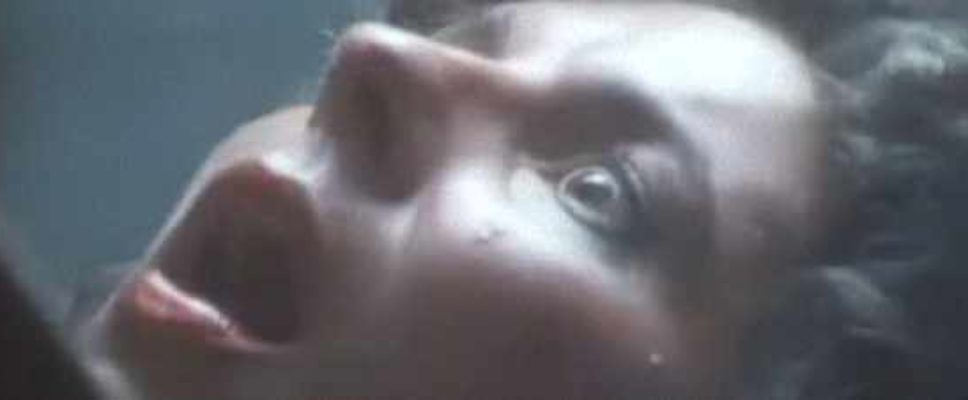Teresa Reviews “4.50 from Paddington” (1987): Murder on Schedule
Support Peschel Press at no cost to you! Buy the Joan Hickson box set.
Fidelity to text: 3 stranglers
![]() Minor characters vanish and others are invented. The entire Martine girlfriend-or-wife-of-Edmund subplot is gone. One murder doesn’t occur although medical malpractice does, amounting to the same thing. Another murder is radically changed in its method. The ending is much more dramatic.
Minor characters vanish and others are invented. The entire Martine girlfriend-or-wife-of-Edmund subplot is gone. One murder doesn’t occur although medical malpractice does, amounting to the same thing. Another murder is radically changed in its method. The ending is much more dramatic.
Quality of movie on its own: 4 stranglers
![]() Pretty darn good, other than everyone mumbling. I especially liked the added police legwork scenes because it made it easier to believe that Miss Marple worked from facts to deduce the murderer and not because she looked into her crystal ball.
Pretty darn good, other than everyone mumbling. I especially liked the added police legwork scenes because it made it easier to believe that Miss Marple worked from facts to deduce the murderer and not because she looked into her crystal ball.

I’m referring to the added scenes of police legwork needed to identify the first murder victim. They made the story make sense: the autopsy said athlete, allowing Miss Marple to make — based on the victim’s feet — the mental leap to dancer. Miss Marple is always acting on intuition, but intuition isn’t accepted in court. Courts demand verifiable facts, or they should. Miss Marple then made the second leap, based on the victim’s clothes (a mix of good-quality but well-worn and cheap but flashy reflecting wild swings in income) to conclude that the victim wasn’t always working. Thus, we arrive at a traveling dance troupe with unstable bookings and thus unstable revenue.
It was clearer (despite criminally poor enunciation) that one of the murders occurred because the victim was a ballet fan and not just someone who was an obstacle to the lucky winner of the tontine.
The interview with the lawyer really clarified the story. We got a better explanation of why Josiah Crackenthorpe’s will was such an obstacle to the Crackenthorpe grandchildren. This is an unfamiliar concept for American audiences where the estate is usually divided among the heirs unless the provisions are spelled out. The Crackenthorpe estate, being English, probably fell under the rule of primogeniture whereby the oldest surviving male heir inherits everything other than small bequests to sisters, no matter what their birth ranking, or younger brothers.
Just like a tontine, the winner takes it all.

Why would a Crackenthorpe family member murder some anonymous dancer? The dancer wouldn’t make one bit of difference to the disposition of the estate. It would make far more sense to arrange convenient accidents for other family members so as to become the sole survivor and inherit everything and not waste time strangling third-rate chorus girls.
Thus, we arrive at Miss Marple’s logical deduction. It’s backed up by police legwork, what the lawyer revealed, and a visit to Somerset House to look up marriage certificates. (Somerset House, I learned, is the repository for all birth, marriage, and death certificates for all of England and Wales going back to 1837 and only ending in 1970 when those records got moved to St. Catherine’s House at Aldwych.) Somerset House shows up frequently in Agatha’s novels. Characters are always visiting to check for secret or bigamous marriages or wills.
There’s much to like about this movie. I appreciated dropping the entire subplot about dead Crackenthorpe brother Edmund’s French fling and possible marriage to the flingee. That was always confusing. In this version, the scriptwriter came up with a plausible reason for the Martine letter that wasn’t nearly as farfetched as Agatha’s original story.
Cedric Crackenthorpe was the very embodiment of a louche, dissipated painter. He admitted — with pride! — to the police why he’d arrived in England a day early: to tryst with a married woman. He was a smarmy toad, not nearly as attractive to the ladies as he thought he was.
Brian Eastley got to play the hero and the ending worked, silly as it was. It also gave a better reason for Lucy Eyelesbarrow to marry him and not just because she felt sorry for the poor, lost puppy dog. It demonstrated why he was an RAF hero.

The character who didn’t work for me was Lucy Eyelesbarrow herself. She was, as expected, hypercompetent. She got things done. She brooked no nonsense from anyone unless she chose to. But I could not envision any of the Crackenthorpe males or Brian Eastley getting lathered up about her. She was too practical and too much like a bossy governess to be alluring and delicious.
This version also played the dramatic unveiling of the murderer just like the novel. We get fishpaste sandwiches in the dining room as opposed to the ridiculous and wildly implausible reenactment of murder on the train in the 2004 Marple version with Geraldine McEwan. What wasn’t realistic about the fishpaste sandwiches in the novel or in the movie was the very idea that hypercompetent Lucy Eyelesbarrow would have left a bone in her fishpaste.
Not her! Eyelesbarrow fishpaste sandwiches would have been pressed through a sieve three times to achieve the correct smooth, pasty texture. I can’t get over the concept of fishpaste sandwiches. Pureed fish sounds vile, like something that comes out of cans and is fed to cats.
All in all, I recommend this version of The 4:50 From Paddington. It plays true to the novel and when it doesn’t, it makes for a better movie. You may have to watch it twice to make up for the occasional murky dialog but that won’t be a hardship.

Support Peschel Press at no cost to you! Buy the Joan Hickson box set.
Finally, a word from our sponsor!

